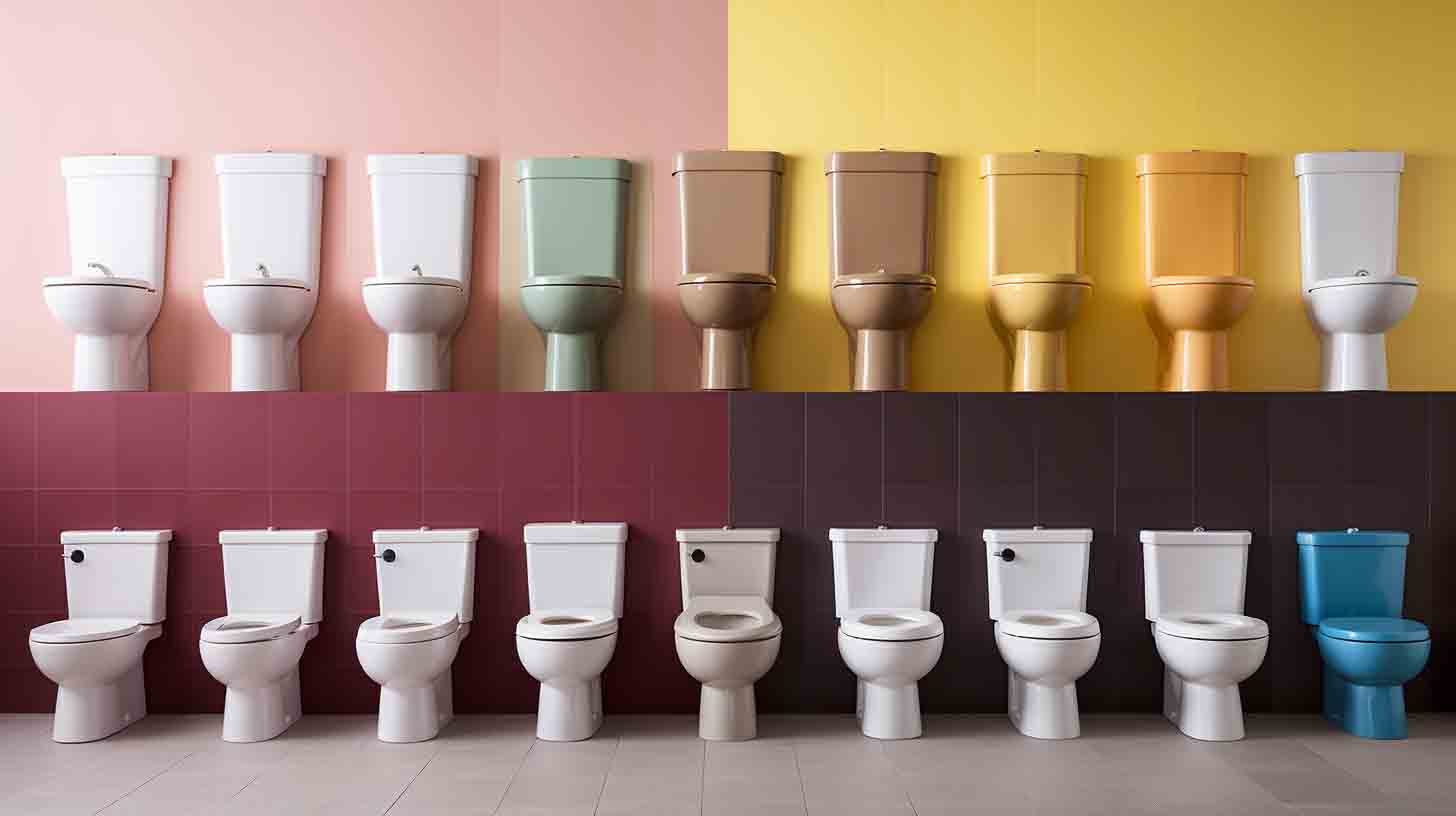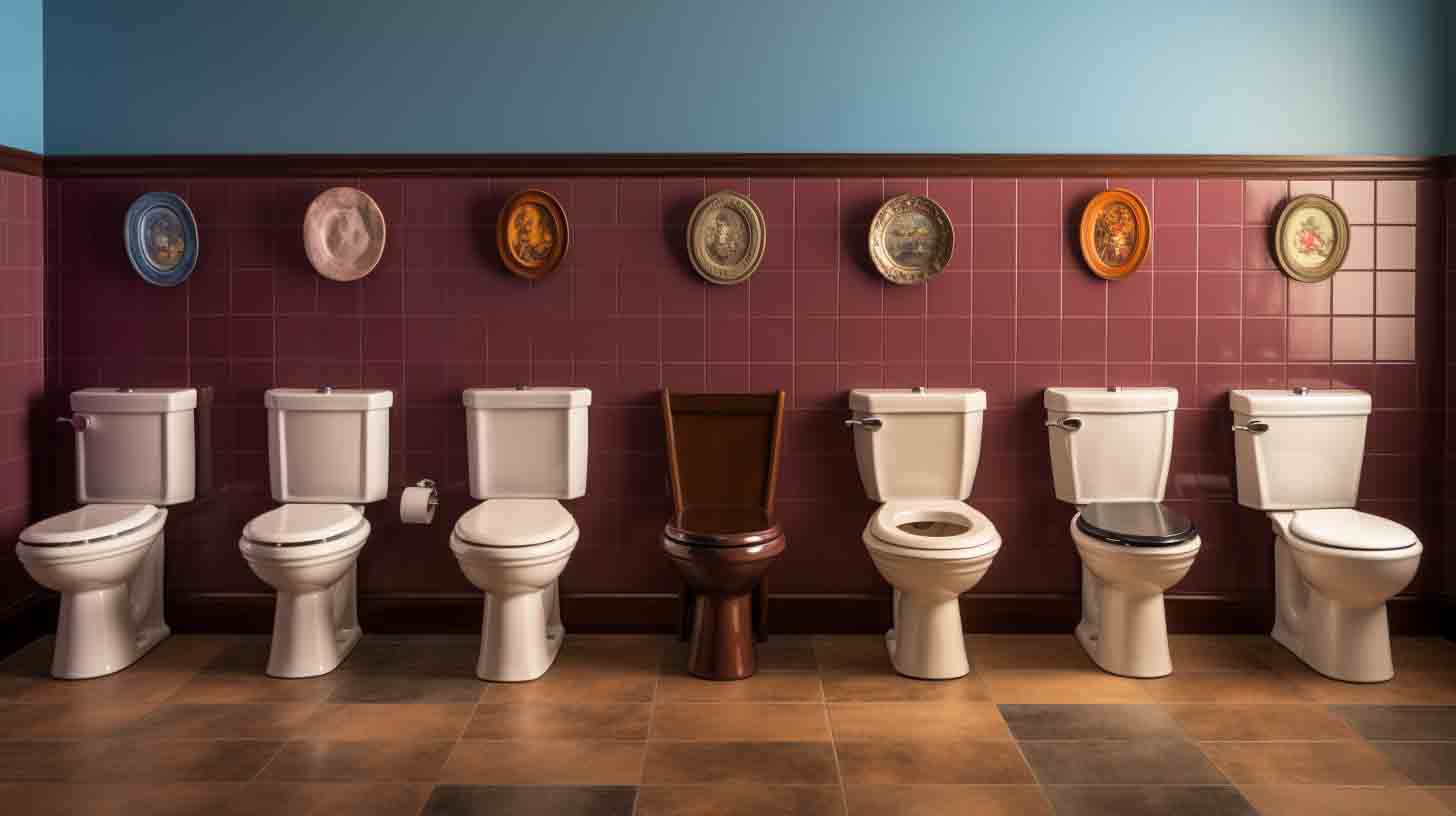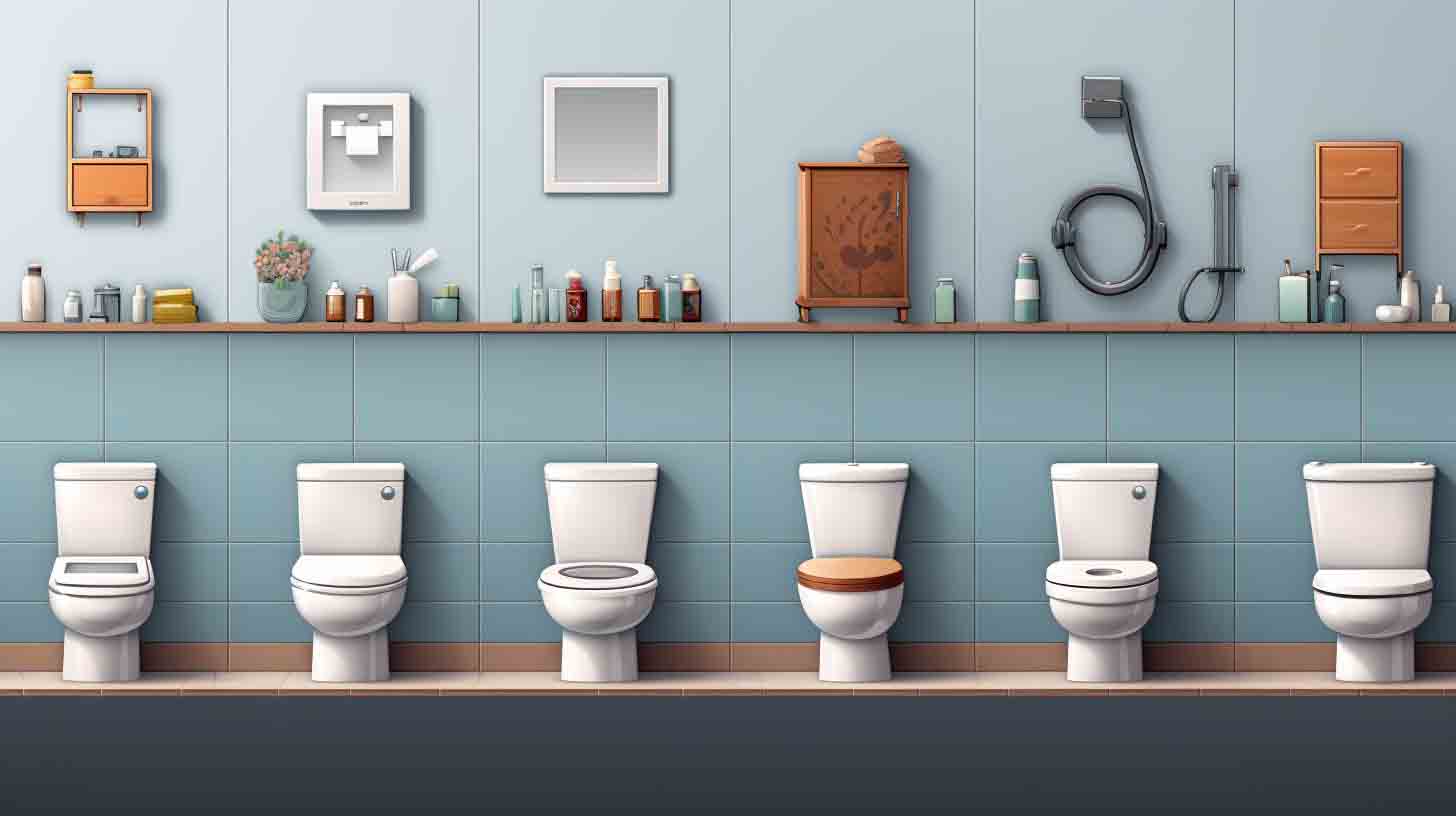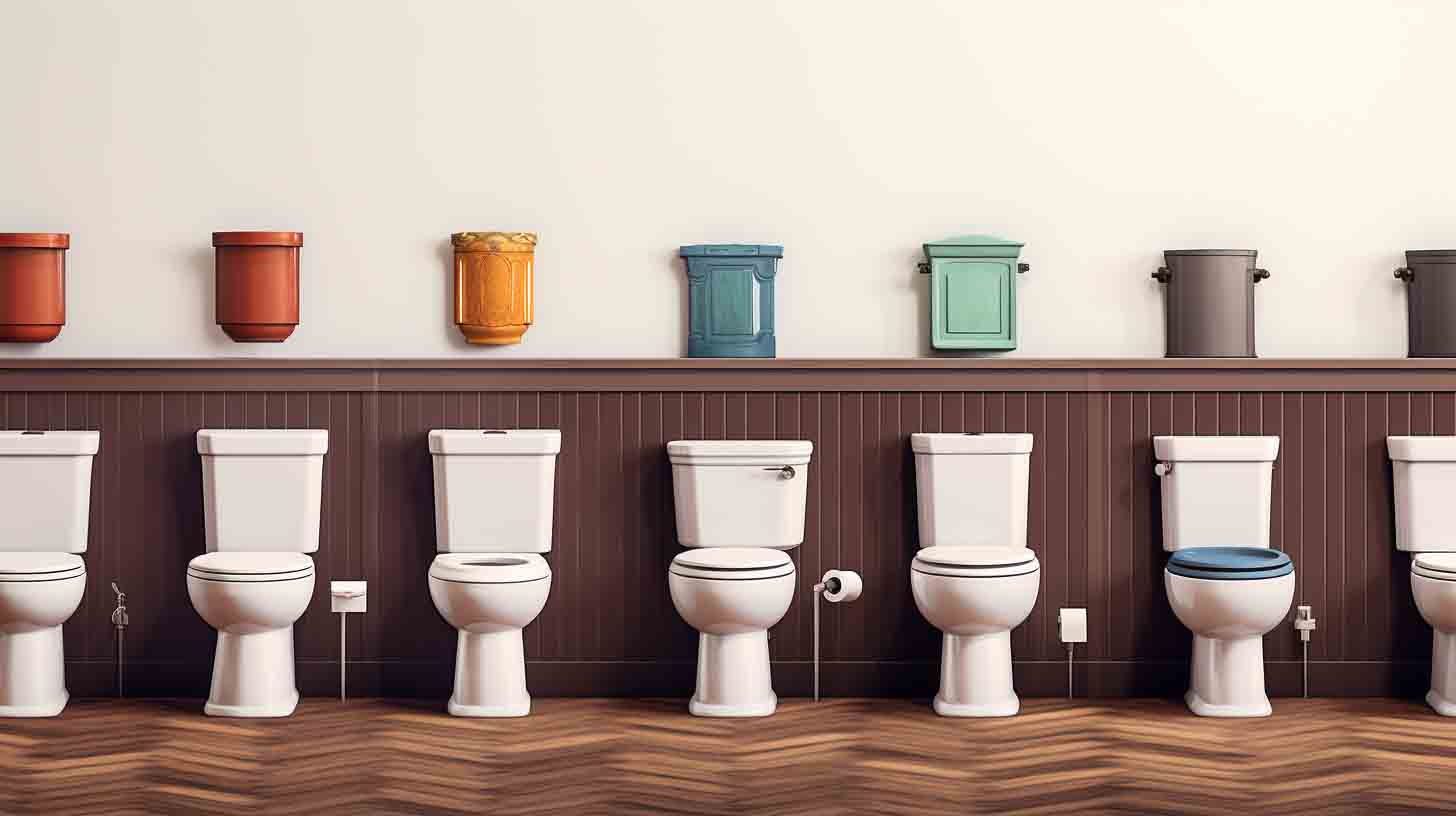Toilets may not always be a topic of conversation, but understanding the different types available can be essential when it comes to choosing the right one for your space.
From the traditional two-piece toilets to the sleek and modern smart toilets, there is a wide range of options to consider. Each type offers unique features and benefits, but what sets them apart?
In this discussion, we will delve into the world of toilets, exploring the characteristics and advantages of different toilet types. Whether you're renovating your bathroom or simply curious about the latest advancements, join us as we uncover the mysteries behind the lid and discover the perfect toilet for your needs.

- Two-piece toilets are commonly found in residential and commercial settings and consist of a toilet bowl and tank.
- One-piece toilets are crafted from a single piece of ceramic, have a compact design, and are easy to clean.
- Wall-mounted toilets are space-saving and modern, but their installation process can be complex and costly.
- Compact toilets are designed for small spaces, maximize functionality, and offer efficient flushing systems.
Two-piece toilets, commonly found in residential and commercial settings, offer a versatile and efficient option for bathroom fixtures.
This type of toilet consists of two separate components: the toilet bowl and the tank. The toilet bowl is the lower part of the toilet, which holds the water and waste. It is typically made of ceramic or porcelain, providing durability and ease of cleaning.
The tank, located above the toilet bowl, houses the flushing mechanism and water supply. The flushing mechanism is a vital component of the two-piece toilet, responsible for effectively removing waste from the toilet bowl. It typically utilizes a gravity-fed system or a pressure-assisted system to create a forceful flush.
Two-piece toilets provide users with a reliable and functional solution for their bathroom needs, combining innovative design and efficient flushing technology.
Continuing our exploration of toilet types, we now turn our attention to the efficient and sleek design of one-piece toilets.
These toilets are crafted from a single piece of ceramic, seamlessly combining the tank and the bowl into one unit. One-piece toilets offer several advantages.
Firstly, their compact design saves space, making them ideal for smaller bathrooms. Additionally, their seamless construction makes cleaning easier, as there are no crevices for dirt and bacteria to accumulate.
The installation process for one-piece toilets is relatively straightforward. However, it is important to note that due to their weight and size, these toilets may require extra support during installation. It is recommended to consult a professional plumber to ensure proper installation and to meet any specific requirements for your particular bathroom layout.
Despite their many advantages, one-piece toilets may be more expensive than their two-piece counterparts. However, their sleek design, durability, and ease of maintenance make them a popular choice for those seeking innovative and efficient bathroom fixtures.

Wall-mounted toilets are a space-saving and modern bathroom fixture that offers a sleek and contemporary design. The installation process for wall-mounted toilets involves securing a sturdy and reliable framework within the wall to support the weight of the toilet. This framework is then concealed behind the wall, leaving only the toilet bowl and flush plate visible.
One of the main advantages of wall-mounted toilets is their ability to save space in the bathroom, as the absence of a visible tank and the elevated position of the bowl create a more streamlined and open look. Additionally, the height of wall-mounted toilets can be adjusted according to personal preference, offering improved comfort and accessibility.
However, there are also some disadvantages to consider. The installation process of wall-mounted toilets can be more complex and costly compared to traditional floor-mounted toilets. Moreover, maintenance and repairs may require accessing the concealed framework behind the wall, which can be challenging and time-consuming.
Despite these drawbacks, wall-mounted toilets remain a popular choice for those seeking a modern and innovative bathroom design.
Compact toilets are a space-efficient bathroom fixture designed to maximize functionality within limited spaces. These toilets are specifically engineered to provide innovative solutions for small bathrooms, offering space-saving designs without compromising on performance. With their compact size and sleek design, they are ideal for urban apartments, tiny homes, and other tight spaces where every inch matters.
One of the key features of compact toilets is their reduced dimensions. They are designed to take up less floor space, making them perfect for cramped bathrooms. Additionally, these toilets often come with space-saving technologies such as slim tanks and shorter bowls, allowing for more room in the bathroom without sacrificing comfort.
Despite their smaller size, compact toilets still offer the same level of performance as traditional toilets. They are equipped with efficient flushing systems that ensure effective waste removal while using minimal water. Some models even come with dual-flush options, enabling users to choose between a full or partial flush, further enhancing water efficiency.
Smart toilets are technologically advanced bathroom fixtures that offer a range of innovative features and functionalities to enhance the overall bathroom experience. These toilets are equipped with various cutting-edge technologies, including automatic flushing, heated seats, bidet functions, and integrated air fresheners. Some smart toilets even come with built-in sensors that can detect the user's presence and adjust the settings accordingly.
Additionally, these toilets often include self-cleaning mechanisms, which eliminate the need for manual cleaning. While the benefits of using a smart toilet are numerous, there are also a few drawbacks to consider. The initial cost of purchasing a smart toilet can be quite high, and the complexity of its features may require a learning curve for some users.
However, for those seeking the ultimate in convenience and innovation, smart toilets offer an unparalleled bathroom experience.

Toilets come in various types such as two-piece, one-piece, wall-mounted, compact, and smart toilets.
Understanding the differences between these types is crucial for making an informed choice when purchasing a toilet.
Two-piece toilets consist of a separate tank and bowl, while one-piece toilets have a seamless design.
Wall-mounted toilets are attached to the wall, saving space and providing a modern look.
Compact toilets are ideal for small bathrooms.
Smart toilets offer advanced features like bidet functions and automatic flushing.
 Get More Information!
Get More Information!